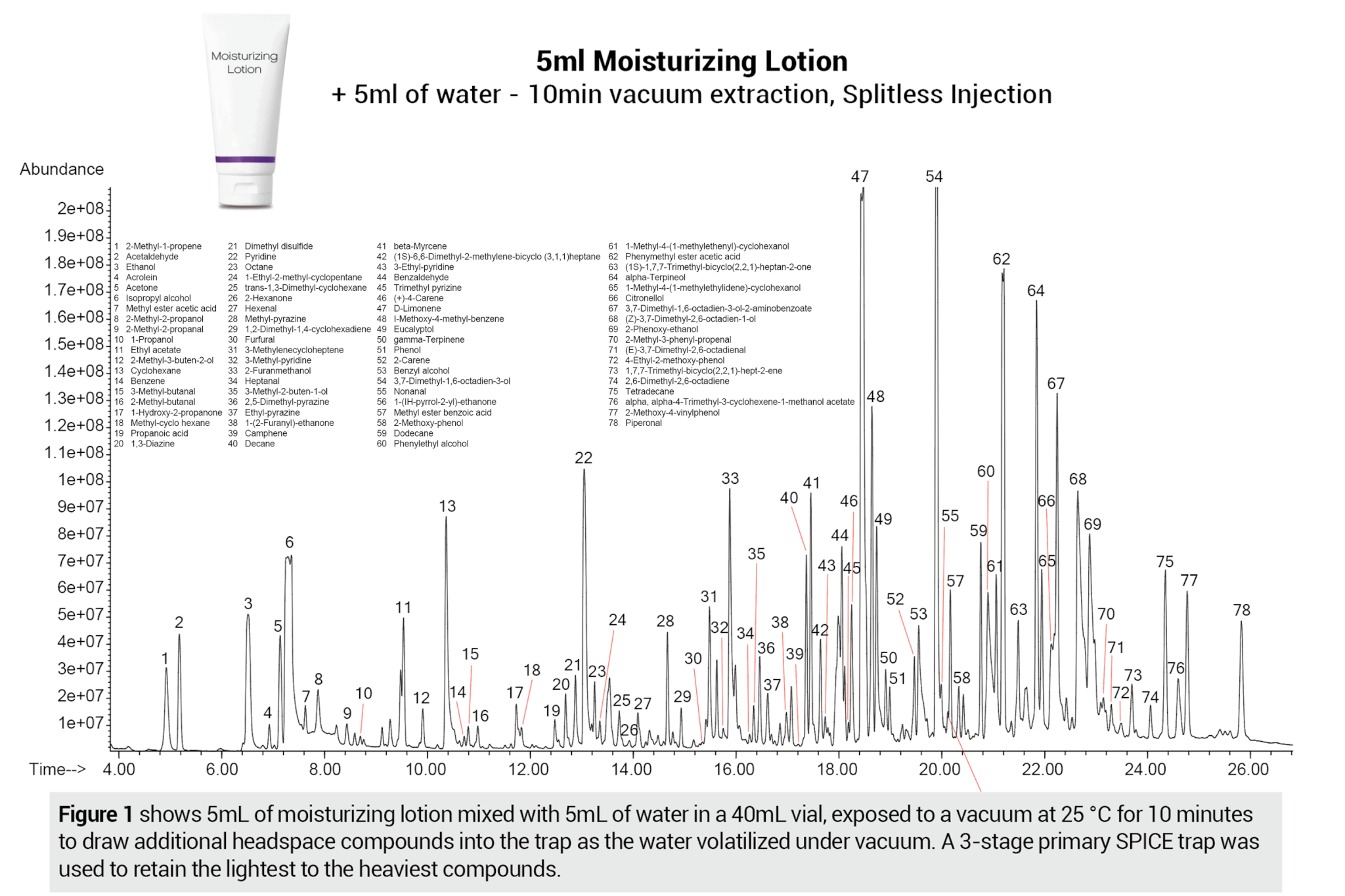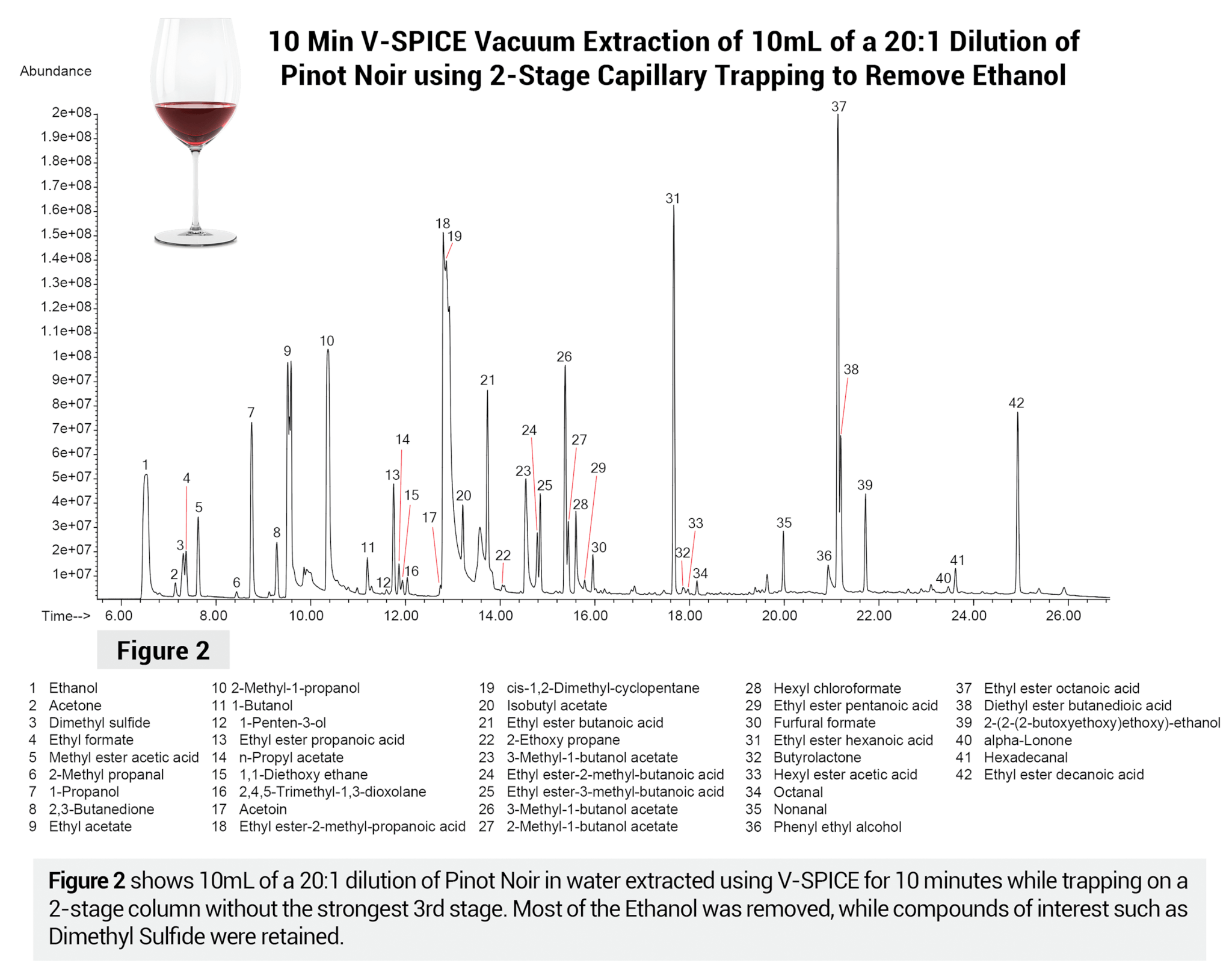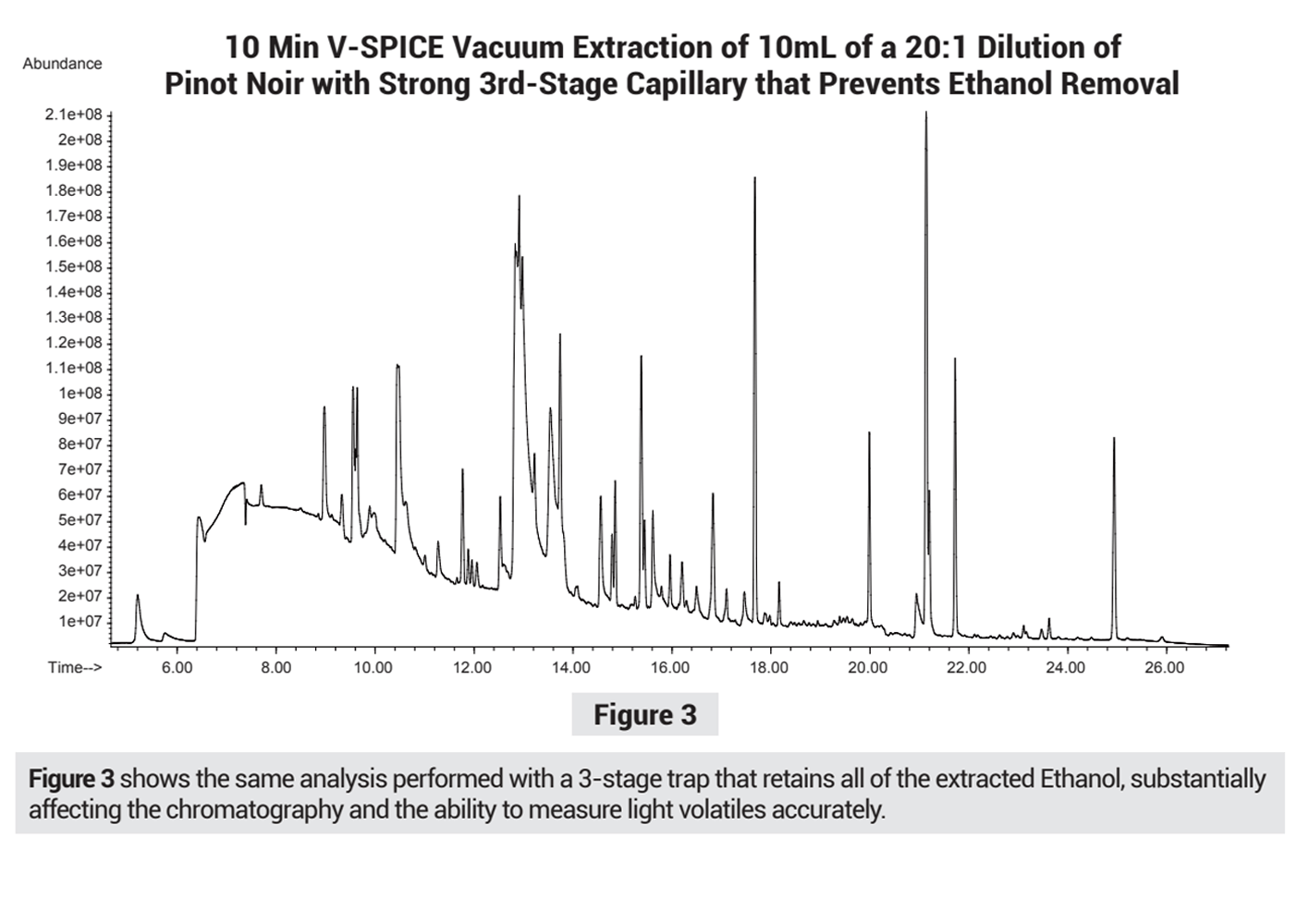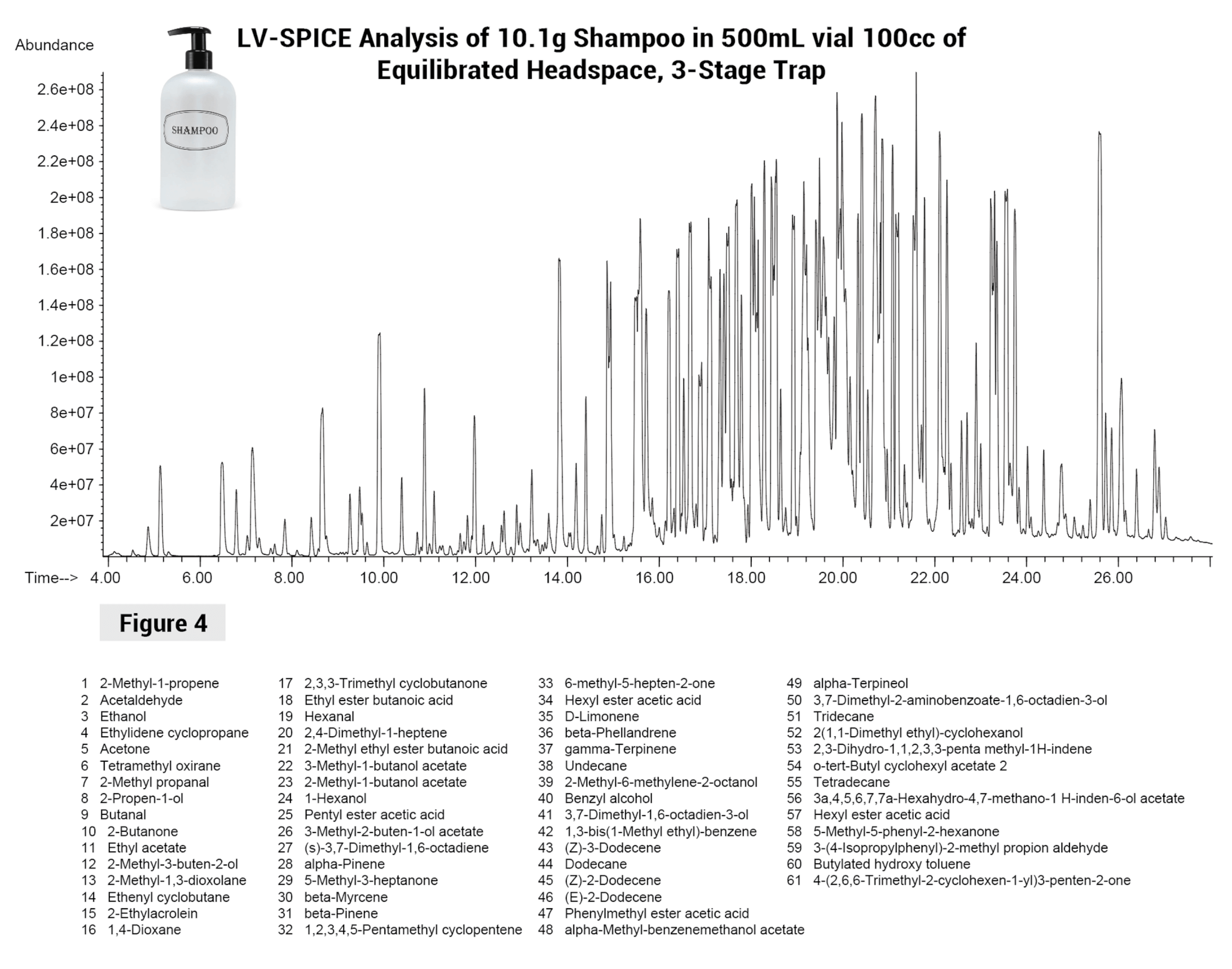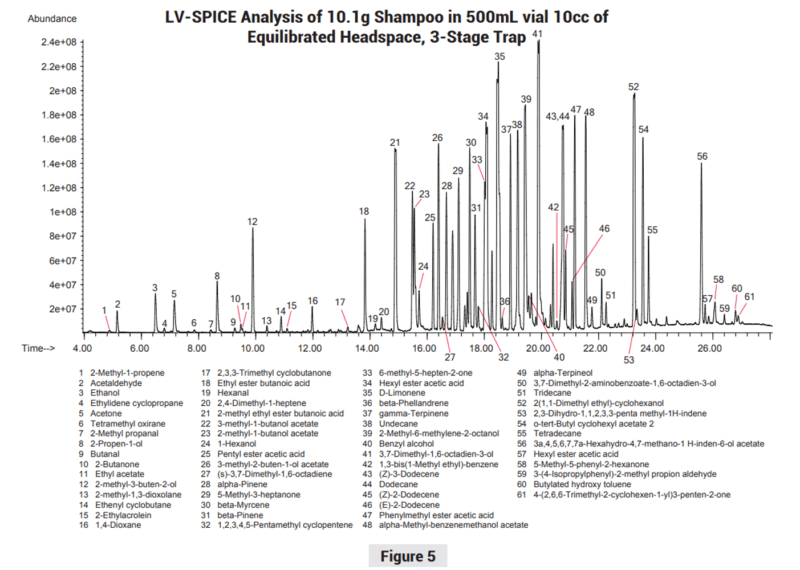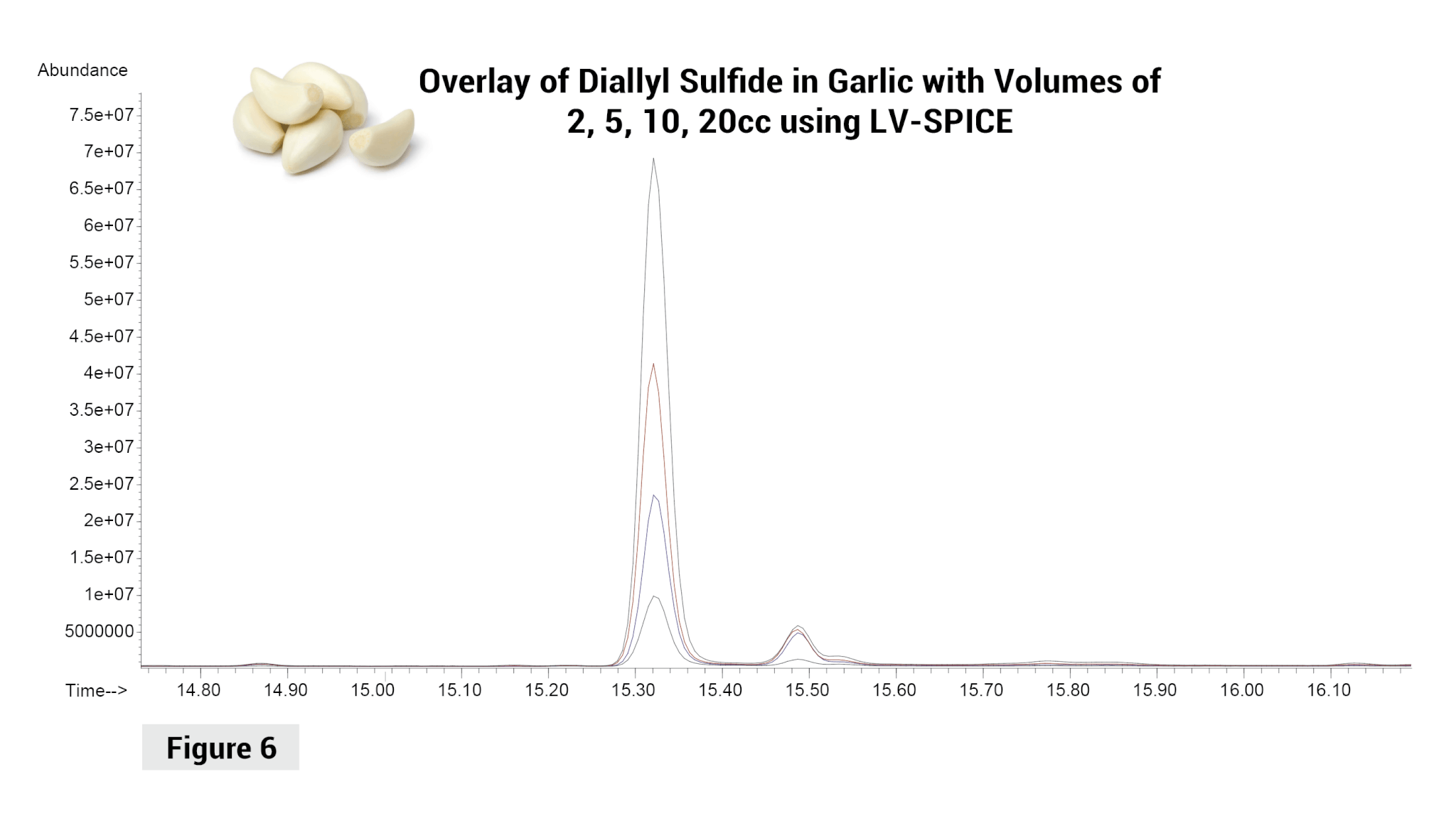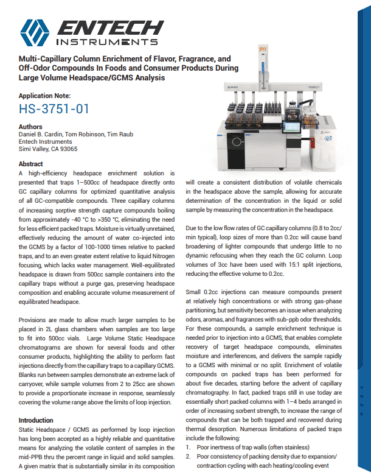S P I C E
Direct Headspace Enrichment on GC Columns Rather than
Packed Traps or Fibers to Optimize Sensitivity and Quantitative
Recovery of Volatile Constituents
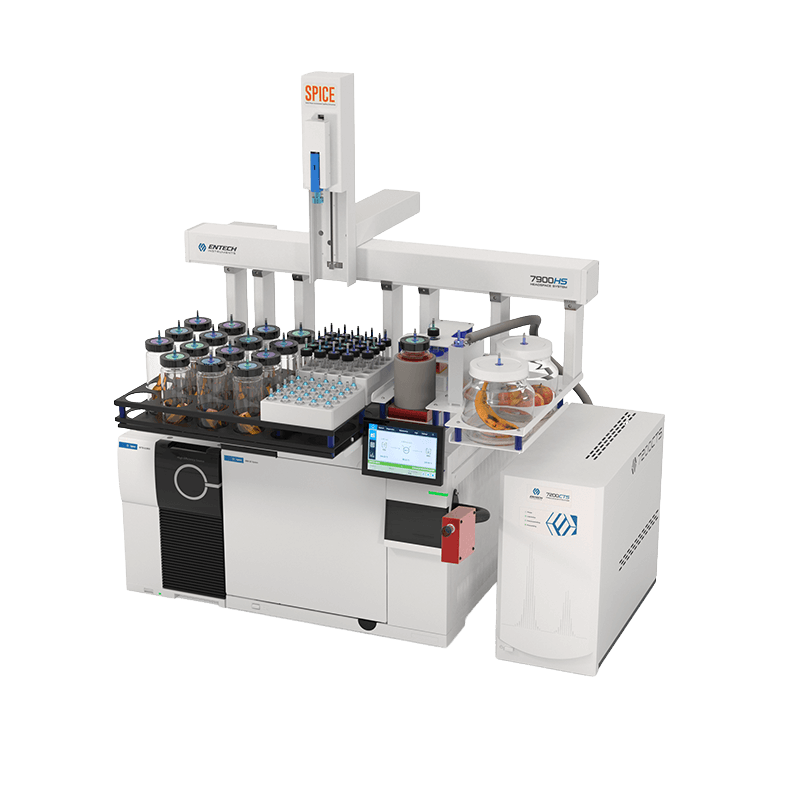
7900HS
Headspace System
The 7900HS is a headspace sample preparation system for GCMS analysis that uses highly efficient capillary traps to quantitatively recover aromas, fragrances, and odors in consumer products. SPICE, or Solid Phase Incremental Capillary Extraction, uses multiple GC columns of increasing chemical affinities to trap compounds over a very wide boiling point range for accurate and reproducible delivery to a capillary based GCMS.
With the introduction of GC capillary columns in the late 1970s, Gas Chromatography transitioned to use capillary columns amazingly fast due to their tremendous advantages over packed columns. With the introduction of PLOT Columns that added a more adsorptive layer to the walls of capillary columns, the need for packed GC columns diminished even further. Resolution, reproducibility, column consistency, reliability, sensitivity, longevity, and recovery from overloading were all dramatically improved. Until now, however, sample preparation and injection into low flow capillary GCs has not utilized the same amazing technology to optimize how the sample is handled prior to the GCMS. GCxGC uses a first capillary column to rapidly inject eluting compounds into a second GC column, and SPME essentially uses Inside-out GC columns for diffusive sampling, but no solutions have emerged that use wall-coated capillaries for multi-phase (multi-bed) trapping and reverse elution until now.
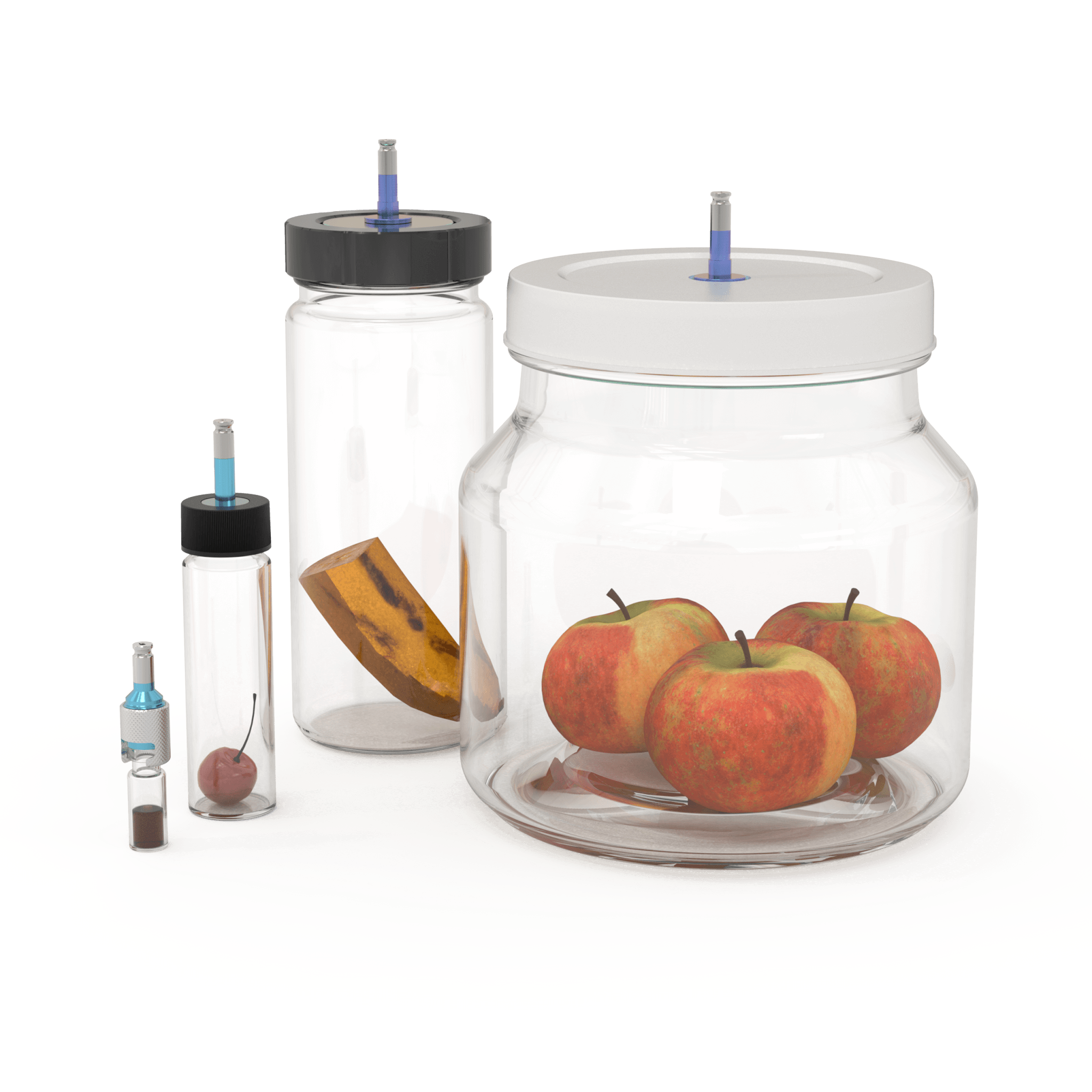
S P I C E
Solid Phase Incremental Capillary Extraction
The SPICE technique uses 3 separate capillary columns in series with increasing strength to trap compounds boiling from -45 °C to over 400 °C. Alternatively, a 2-column SPICE trap without the strongest 3rd column can be used to eliminate Ethanol while measuring aromas and off-odor compounds in alcohol containing beverages. After primary trapping, a SPICE focusing trap further reduces the sample volume for incredibly fast injection into a GCMS for maximum sensitivity and compound resolution. Just as capillary columns operate at lower flow rates, capillary traps can rapidly desorb a sample at similar flow rates as well, thereby making splitting an option rather than a requirement. The smaller particle size used in PLOT columns compared to packed traps allows much faster elimination of water vapor, resulting in virtually no impact on GCMS response even when at 100% saturation in samples. Two different versions of SPICE are implemented on the 7900HS
Why SPICE is the breakthrough your lab has been waiting for
Vacuum SPICE (V-SPICE)
V-SPICE offers a more quantitative and sensitive alternative to HS-SPME. Samples from 0.1-20g are placed in either 2mL or 40mL vials. During extraction, the 7900HS rail moves the sample in close proximity to the SPICE capillary trapping system, and the entire headspace is drawn through the SPICE Primary Trap, using vacuums strong enough to boil the matrix at 25-50 °C. The evaporating matrix (water or water/alcohol) continues to sweep the volatile chemicals through the short, heated transfer line to the primary capillary trap, where water passes through virtually unretained. Alternatively, a small pulsed purge of UHP Nitrogen or Helium adds additional flow to assist in transfer to the SPICE Primary Trap while still maintaining a relatively strong vacuum. Internal standards can be added directly to the primary SPICE Primary Trap and surrogates to the sample itself prior to extraction, but due to the completeness of most extractions, isotope dilution usually isn’t necessary. The sample is reverse eluted to a SPICE Focusing Trap containing shorter segments of the same capillary columns, allowing fast injection to the capillary GCMS. Carryover with this solution is typically less than 0.02%, and there are no fragile fibers to deal with.
Large Volume Static Headspace SPICE (LV-SPICE)
LV-SPICE uses large sample vials (40, 500, 2400mL) to answer the question “what is that smell?” Extraction techniques such as Dynamic Headspace (DHS) do not answer this accurately, because heavier compounds continue to be enriched during the sweeping process so are over-represented in the analysis. If only 1% of compound A but a full 23% of compound B are in the headspace at equilibrium (in a container of cosmetics or a bag of potato chips), then this is what needs to be delivered to the GCMS for analysis. Dynamic purging that may result in a recovery of 2% rather than 1% of compound A would represent a 100% relative error in what a consumer would be smelling, so a headspace “snapshot” is needed under full, static equilibrium. LV-SPICE uses large containers to allow samples to come to equilibrium prior to quickly drawing a specific volume of headspace into the primary SPICE trap, from 1cc to 250cc or more, without adding any purge gas to the sample that would otherwise take the headspace out of equilibrium with the liquid or solid sample. With today’s high sensitivity GCMS (GCMSMS) systems, typically only 10-50cc of equilibrated headspace is needed to reach even the lowest olfactory detection limits at low part per trillion levels, so a virtual snapshot of the headspace can be achieved in a SPICE trapping event lasting 2 minutes or less, with very little pressure change in the equilibrated headspace of a large vial.
Get Product Pricing, Promotions, App Notes & More


